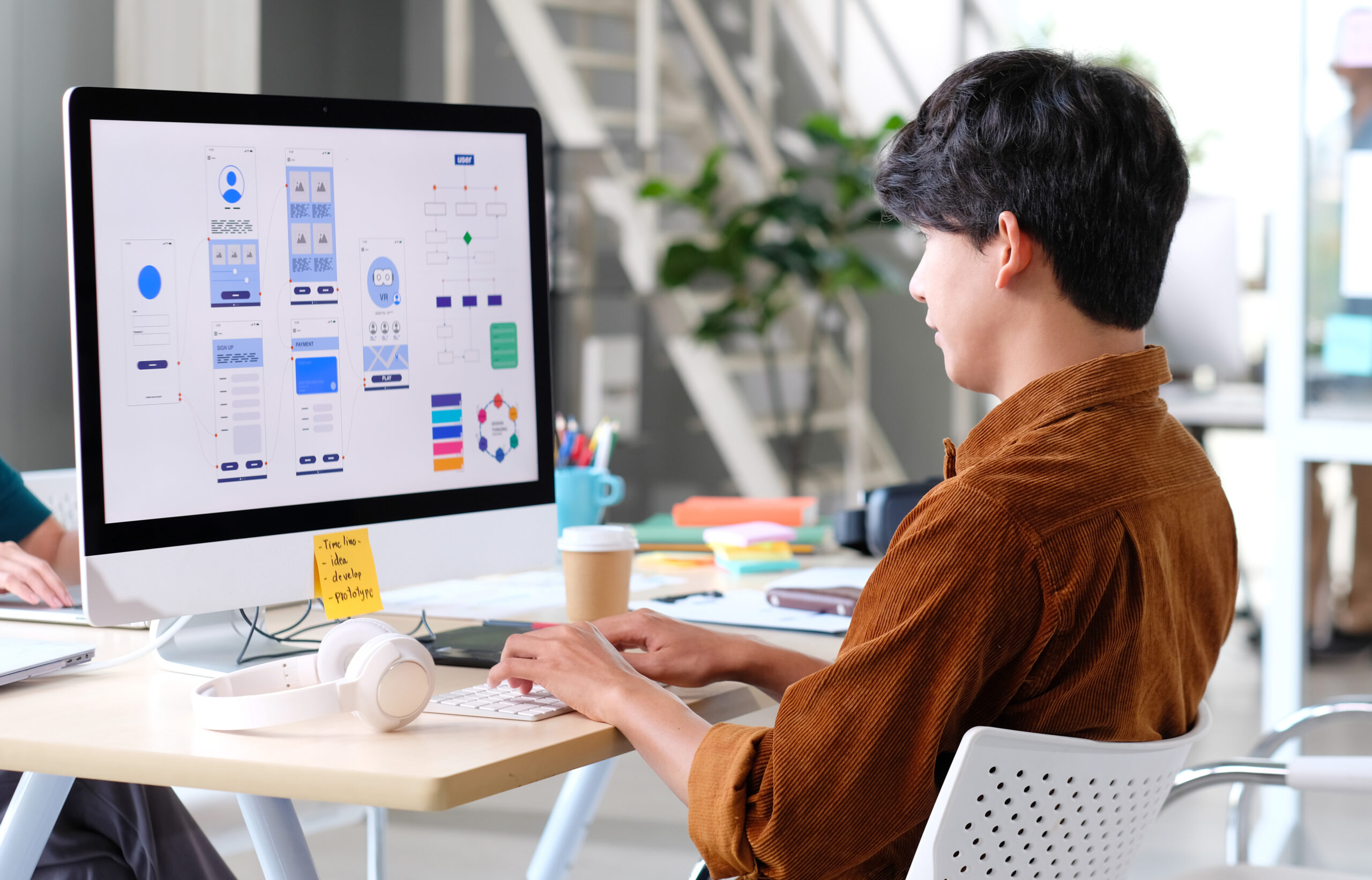Boost Customer Experience with Cutting-edge Fort Worth Web Development
Boost Customer Experience with Cutting-edge Fort Worth Web Development
Blog Article
Important Website Design Tips for Creating Aesthetically Appealing Sites
In the ever-evolving electronic landscape, crafting a visually appealing site is both an art and a science, calling for a tactical approach to design. Recognizing your audience's preferences is paramount, as it lays the foundation for each design decision. From selecting a color scheme that resonates with your brand name identification to making sure seamless navigating, each element plays a crucial role in the individual experience. In a mobile-first world, enhancing for various gadgets is no much longer optional. What absolutely identifies a phenomenal website from a just practical one? Let's explore the components that astound users and boost interaction.
Understanding Your Audience
Comprehending your audience is a fundamental step in efficient website design, as it directly influences the functional and visual decisions you make (Fort Worth SEO). The demographics, choices, and actions of your target customers determine the structure, web content, and interactive components of your website. By deeply understanding your target market, you can customize your design to meet their expectations, guaranteeing a more engaging and instinctive user experience
Comprehending these aspects helps in creating characters that represent your regular individuals, allowing you to empathize with their requirements and preferences. This empathy leads to develop decisions that reverberate with individuals, such as intuitive navigating courses and pertinent web content.
Furthermore, comprehending user intent-- whether they seek info, products, or solutions-- enables you to focus on material and features appropriately. In doing so, you not only improve individual satisfaction but additionally raise the chance of accomplishing your site's goals, whether they be interaction, lead generation, or sales.
Picking the Right Color Combination
When it comes to web layout, selecting the appropriate shade palette is crucial, as it dramatically influences the customer's perception and interaction with your website. Colors evoke feelings and can affect a visitor's state of mind and behavior, making them a crucial aspect in creating a cohesive and engaging individual experience.
To begin, think about the emotional results of colors. Blue frequently communicates trust fund and professionalism and trust, while red can stimulate exhilaration and necessity. It's vital to recognize these organizations to ensure your palette enhances the intended brand name message. Furthermore, make certain that your shades offer sufficient contrast to enhance readability and availability, meeting the needs of all customers, including those with aesthetic impairments.
Restricting the number of shades made use of can prevent visual mess and create a harmonious look. By thoughtfully choosing your color palette, you can create an aesthetically pleasing and efficient web site.
Prioritizing User-friendly Navigating
Effective navigation is a cornerstone of straightforward web design, ensuring site visitors can quickly locate the details they seek. A well-structured navigating system enhances user experience by offering user-friendly paths, permitting individuals to check out an internet site flawlessly. To accomplish this, web designers need to think about a check number of key components.
Excessively complex navigation menus can bewilder customers, leading to stress and a potential boost in bounce prices. This not only he said help in usability yet likewise boosts ease of access for diverse individual groups.

Additionally, including a search feature can significantly enhance navigating, specifically for content-rich internet sites. This function encourages users to quickly find specific details without sorting via numerous pages.
Finally, make certain that navigating links are prioritized and clearly appreciable based on user demands. This strategy can direct users to high-value material, making sure a efficient and satisfying interaction with the website.
Optimizing for Mobile Tools
In today's electronic landscape, ensuring a site is maximized for smart phones is no more a need but a luxury. With the enhancing number of customers accessing the internet via mobile phones and tablets, mobile optimization plays an essential function in determining a web site's success. A receptive layout that immediately adapts to various display sizes is essential. This strategy not just boosts individual experience however also positively impacts internet search engine rankings, as search engines focus on mobile-friendly sites.
A clutter-free user interface with quickly accessible menus and switches guarantees smooth customer communication. Huge, uncompressed documents can significantly reduce down a web site, leading to higher bounce rates. In addition, designers need to focus on touch-friendly design components, making sure switches and links reference are sufficiently sized and spaced to fit finger faucets.
Lastly, screening is paramount. Regularly analyzing the site's efficiency on various gadgets and display dimensions aids identify problems and preserve ideal functionality. By focusing on mobile optimization, internet designers can produce highly useful and aesthetically enticing sites that accommodate the demands these days's mobile-centric audience.
Enhancing Visual Pecking Order
A well-structured visual power structure serves as the backbone of effective internet style, leading customers through material flawlessly. Shade contrast can highlight phone calls to action, while whitespace helps differentiate different areas, stopping info overload.

Integrating typography successfully is another critical element. Using a constant font design and size power structure creates a clear difference between headings, subheadings, and body message, making certain that customers can quickly understand and check details. In addition, alignment and closeness play vital duties in developing partnerships in between content pieces, aiding in the intuitive navigating of info.
Interactive aspects like switches and web links must be plainly placed to assist customer interaction. Visual cues, such as arrows or icons, even more enhance the individual's trip, subtly steering them in the direction of the desired actions. By meticulously crafting an aesthetic hierarchy, designers can produce internet interfaces that not only bring in yet also keep customer interaction.
Final Thought
Enhancing aesthetic hierarchy successfully overviews user attention. By prioritizing these aspects, a visually appealing and user-centric web site can be achieved, fostering a positive interaction with the audience.
The demographics, preferences, and habits of your target customers dictate the framework, content, and interactive elements of your internet site. In doing so, you not only boost individual complete satisfaction but also raise the probability of achieving your site's objectives, whether they be involvement, lead generation, or sales.
When it comes to web layout, picking the right color palette is vital, as it dramatically affects the individual's assumption and communication with your site. A well-structured navigation system enhances customer experience by providing user-friendly pathways, enabling users to explore an internet site perfectly. With the enhancing number of customers accessing the web through tablets and smartphones, mobile optimization plays an essential duty in establishing a site's success.
Report this page